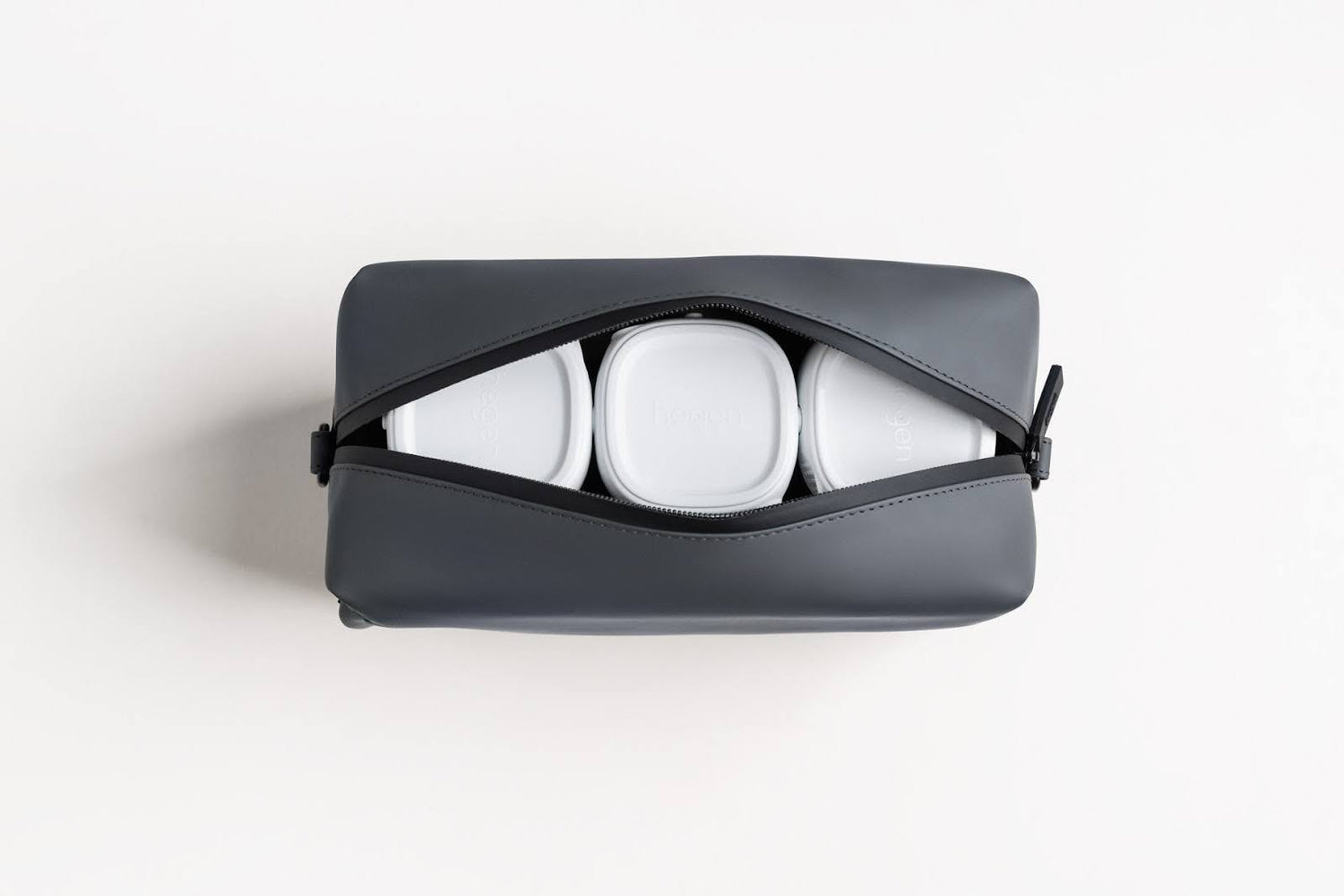Choosing the right teat size is key to a smoother, more comfortable feeding journey for both you and your baby. The right bottle teat ensures your baby receives just the right amount of milk at a pace that matches their ability to suck and swallow. As your baby grows and their feeding needs evolve, knowing when to change teat size helps reduce feeding frustrations, promote proper intake, and support healthy development.
Teat Size Guide: Choosing the Right Flow
Finding the best teat size for your baby is about more than just age—it’s about recognising their unique feeding behaviours, preferences, and developmental stage.
Consider Your Baby’s Age
Age can be a helpful starting point, but of course, every baby is unique. Hegen offers five bottle teat options to suit your baby’s growth and feeding style:
- Extra Slow Flow (0) – For newborns and premature babies
- Slow Flow (1) – Suitable from 1 to 3 months
- Medium Flow (2) – Suitable from 3 to 6 months
- Fast Flow (3) – Suitable from 6 months onwards
- Thick Feed (Y-Cut) – Ideal for thicker liquids like cereals or expressed milk with supplements
Keep in mind that these guidelines are approximate—your baby’s development and comfort should always take priority.
Feeding Habits
Your baby’s feeding behaviour can offer important clues about whether it’s time to change the size of their bottle teat. Look out for these signs:
- Takes too long to feed (over 20 minutes)
- Gets frustrated or fussy mid-feed
- Sucks so hard the teat collapses
- Falls asleep before finishing a full feed
These could indicate the milk flow is too slow, and your baby may be ready for a faster teat size.
Listen To Your Baby
Babies are intuitive feeders. Their reactions during feeding often signal when an adjustment is needed:
- If your baby chokes, coughs, or gags, the flow might be too fast.
- If they refuse the bottle or struggle to latch, the teat could be too slow—or too fast.
- Some babies may show a clear preference for a certain flow rate, regardless of age.
Teat Hole Shape & Size
The teat hole size and shape directly affect how quickly milk flows from the bottle. Round holes offer a steady stream, while Y-cut (slit) holes allow for variable flow, ideal for thicker feeds or older babies.
Hegen’s patented elliptical-shaped teat mimics a mother’s nipple, making latching more natural and comfortable. Its off-centre design supports upright feeding to reduce backflow, while the anti-colic air vent system helps minimise gas and discomfort.
When to Change Bottle Teat Size?
As babies grow, their feeding style changes too. Knowing when to change bottle teat size is part of supporting their development.
Some babies may need a faster or slower flow before or after the suggested age range—this is completely normal. Here are some clear signs that it may be time for a change:
- Feeding takes longer than usual, or your baby seems tired after feeding
- Your baby shows frustration, fussiness, or pulls away from the teat
- Gagging, choking, or coughing during feeding
- Your baby refuses the bottle altogether
These behaviours are a good place to start if you are wondering when to change your baby’s bottle teat size.
Signs to Increase Teat Size
Noticing the following could mean it’s time to increase teat size:
- Feeding sessions take too long (typically more than 20 minutes), indicating the milk flow is too slow.
- Your baby becomes fussy or frustrated during feeding or keeps unlatching.
- Teat collapses while feeding, showing strong suction effort.
- Falling asleep mid-feed could signal that baby is using too much energy to suck milk.
These are clear signs your baby might need a faster teat size to keep up with their developmental needs.
Signs to Decrease Teat Size
On the other hand, these cues may suggest the milk flow is too fast, and you should decrease the teat size:
- Choking, gagging, or coughing while feeding
- Milk dribbling from the corners of the mouth
- Feeding too quickly, leading to discomfort or spit-ups
- Refusing the bottle suddenly or becoming unsettled during feeding
If you observe these patterns, switching to a slower flow teat can help your baby feed more comfortably and safely.
Tips for Properly Caring for and Maintaining Teats
To keep feeding safe and hygienic:
- Clean after every use: Wash teats in warm, soapy water and sterilise them regularly using boiling water or a steriliser.
- Inspect regularly: Check for cracks, thinning, stickiness, or any changes in shape or texture.
- Replace every 2–3 months, or immediately if signs of wear and tear appear.
Proper care extends the lifespan of your baby’s bottle teats and ensures safe, hygienic feeding every time.
Hegen Teats for Your Baby’s Feeding Journey

Hegen’s bottle teats are designed to grow with your baby and support their transition from breast to bottle. Our unique teat design encourages a natural latch, mimicking breastfeeding to reduce nipple confusion. Each teat features an anti-colic vent, helping to reduce air intake and discomfort.
Whether you’re just starting out, learning more about paced bottle feeding, or ready to change teat size, Hegen offers a range of teat flow options to suit every stage. Explore our full collection and choose the right baby bottle teat that best fits your baby’s feeding rhythm and growth.





